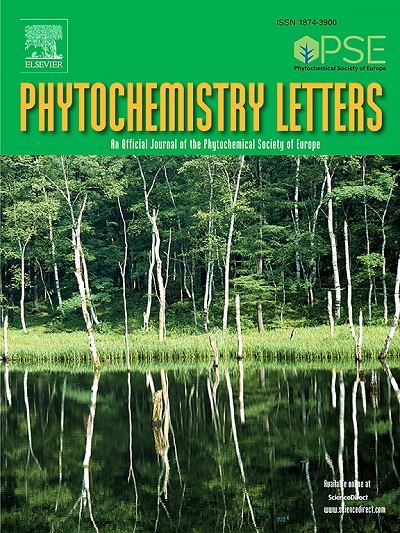Coumarin glycosides and their α-glucosidase inhibitory effects from Impatiens eberhardtii
IF 1.3
4区 生物学
Q4 CHEMISTRY, MEDICINAL
引用次数: 0
Abstract
Two new coumarin glycosides, namely emberharins A and B (1 and 2), and eight known compounds, fraxidin (3), kaempferol (4), kaempferol 3-O-β-glucopyranoside (5), kaempferol 3-O-α-L-rhamopyranoside (6), quercetin (7), isoquercitrin (8), indole-3-cacboxylic methyl ester (9), and lariciresinol 9-O-β-D-glucopyranoside (10) were isolated from the methanol extract of Impatiens eberhardtii Tardieu aerial parts. Their chemical structures were elucidated by 1D- and 2D-nuclear magnetic resonance spectroscopy, mass spectroscopy, and then evaluated in comparison with literature data. Compounds 5, 6, and 7 showed significant inhibitory α-glucosidase with IC50 values of 181.6 ± 6.7, 170.6 ± 15.2, and 157.7 ± 5.9 μg/mL, respectively. These findings suggest that the isolated compounds, particularly 5, 6, and 7 hold potential as α-glucosidase inhibitors, which warrants further investigation for their antidiabetic properties.
求助全文
约1分钟内获得全文
求助全文
来源期刊

Phytochemistry Letters
生物-生化与分子生物学
CiteScore
3.00
自引率
11.80%
发文量
190
审稿时长
34 days
期刊介绍:
Phytochemistry Letters invites rapid communications on all aspects of natural product research including:
• Structural elucidation of natural products
• Analytical evaluation of herbal medicines
• Clinical efficacy, safety and pharmacovigilance of herbal medicines
• Natural product biosynthesis
• Natural product synthesis and chemical modification
• Natural product metabolism
• Chemical ecology
• Biotechnology
• Bioassay-guided isolation
• Pharmacognosy
• Pharmacology of natural products
• Metabolomics
• Ethnobotany and traditional usage
• Genetics of natural products
Manuscripts that detail the isolation of just one new compound are not substantial enough to be sent out of review and are out of scope. Furthermore, where pharmacology has been performed on one new compound to increase the amount of novel data, the pharmacology must be substantial and/or related to the medicinal use of the producing organism.
 求助内容:
求助内容: 应助结果提醒方式:
应助结果提醒方式:


